John Paul II's Beatification Day yesterday, May 1, 2011, was a truly historic event only likely to be equalled by what will almost certainly be the next big moment in the great Pope's story, his canonization...
Very appropriately, the event has left the mass media - including the normally logorrheic commentariat - relatively dumbstruck. The ceremony said it all, and what needed to be said in words was expressed so magnificently, and with his usual simplicity, by Benedict XVI in his homily. All other words are superfluous, but not the photos...
PHOTO SUMMARY:
BEATIFICATION DAY
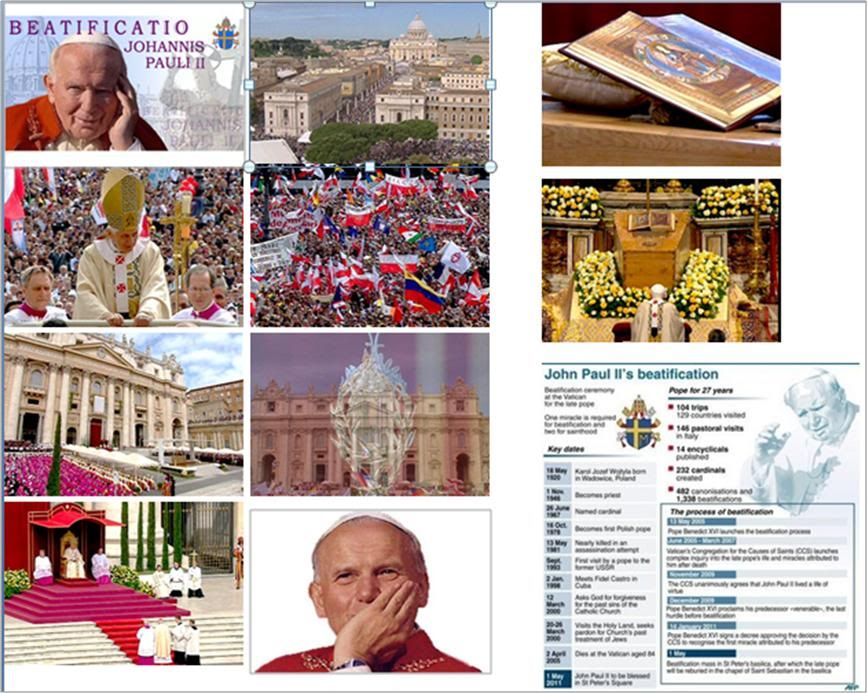
The mini-slideshow from Vatican Radio online with highlights of the day, and an AP fact sheet on John Paul II.
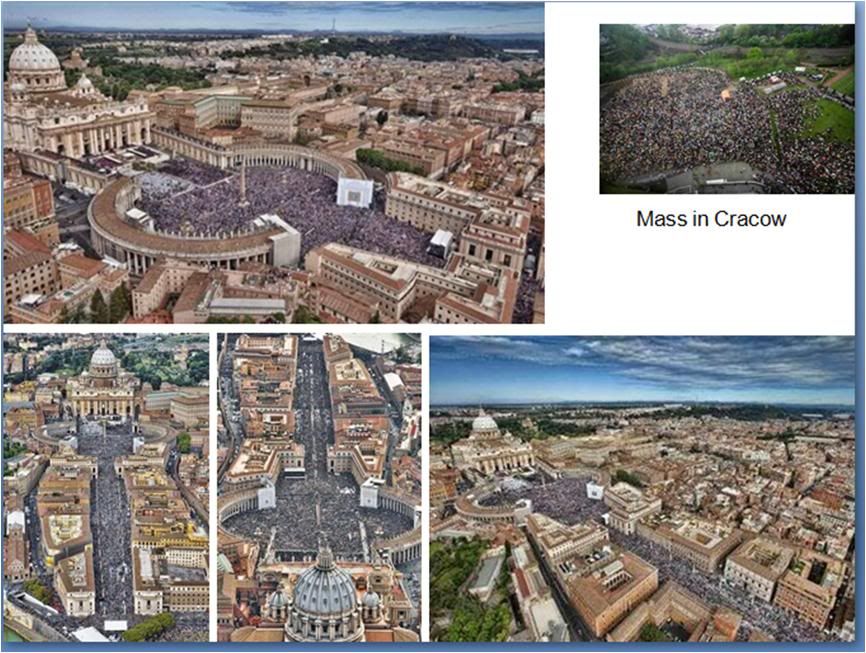
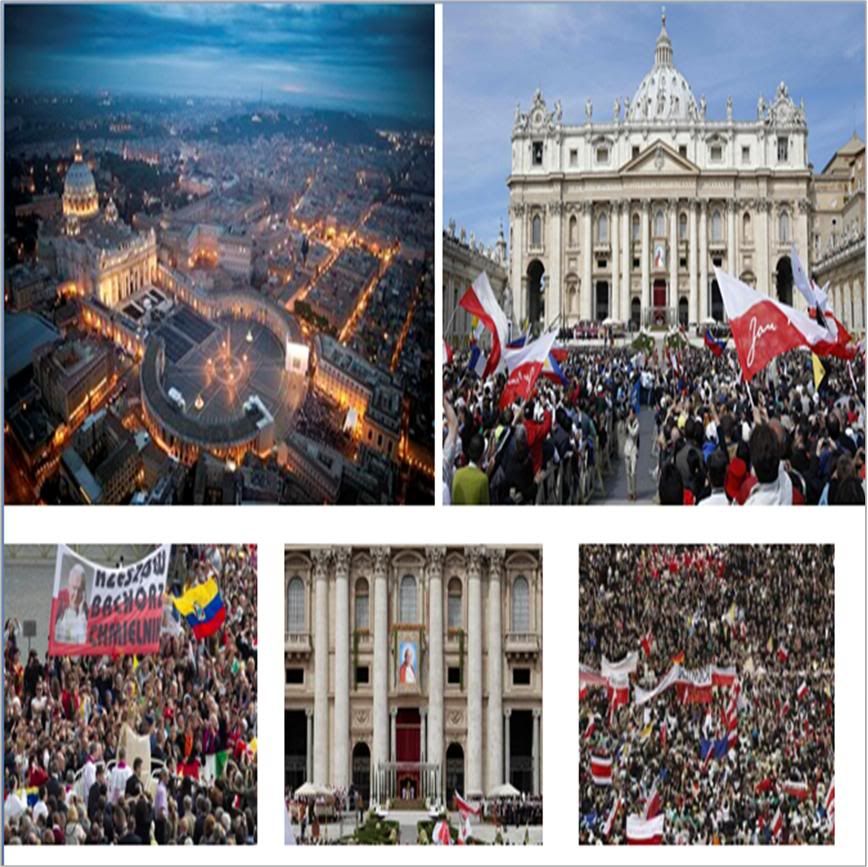
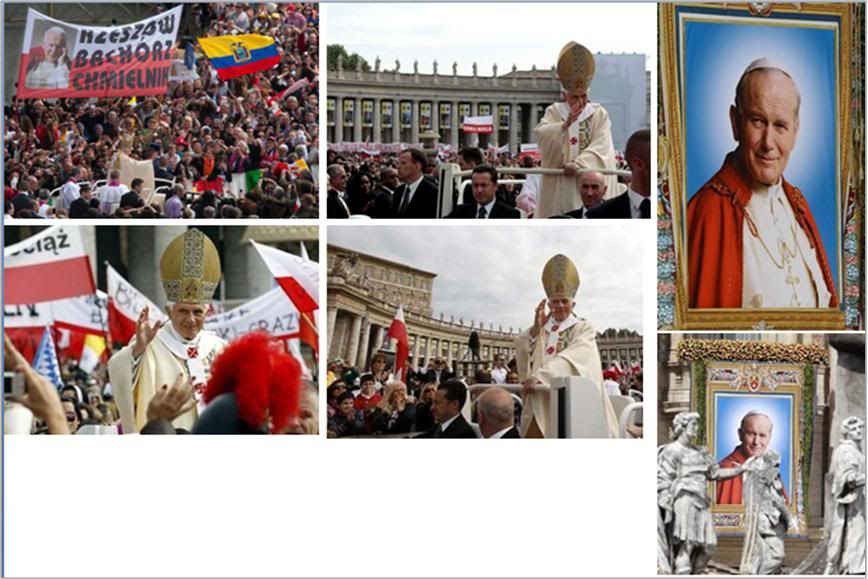
Establishing shots of St. Peter's Square. In the top photo, I inserted an inset of the Mass that took place outside Cracow.
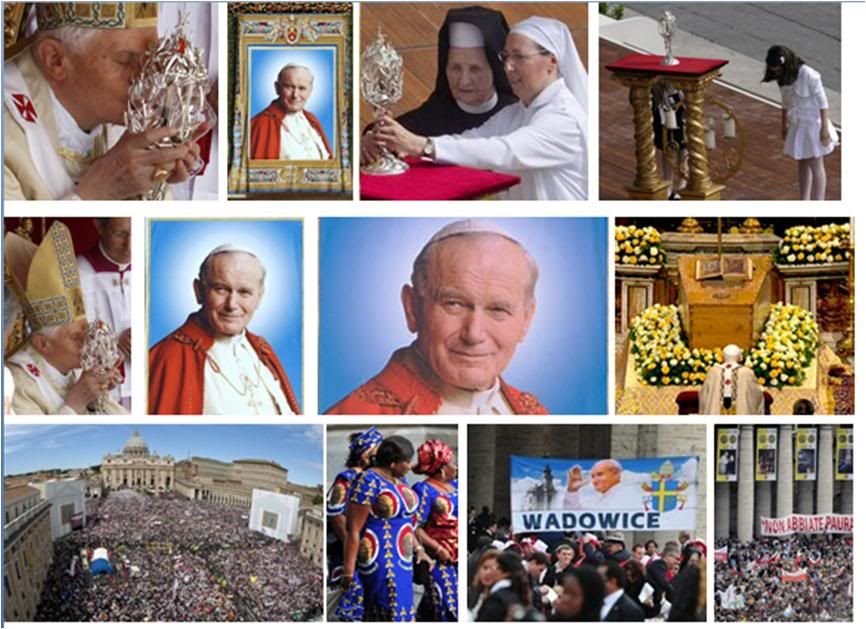
Photos I used for the Beatification Day banner.

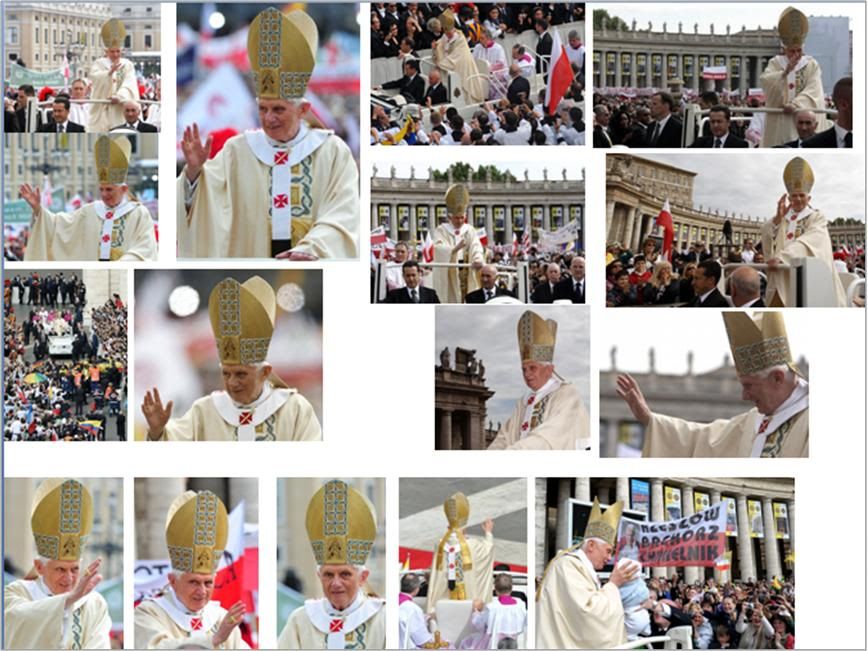
Pope Benedict arrives for the ceremony.
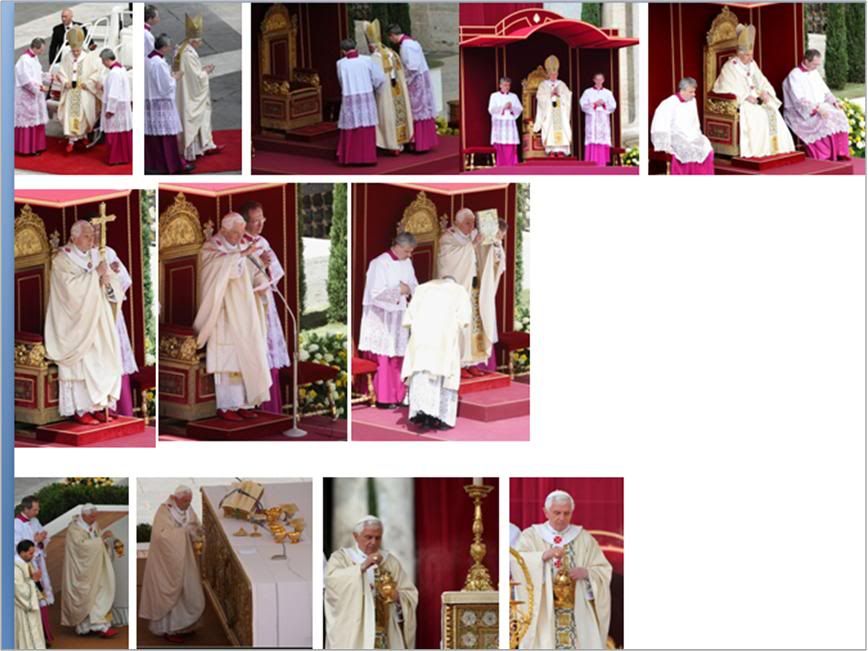
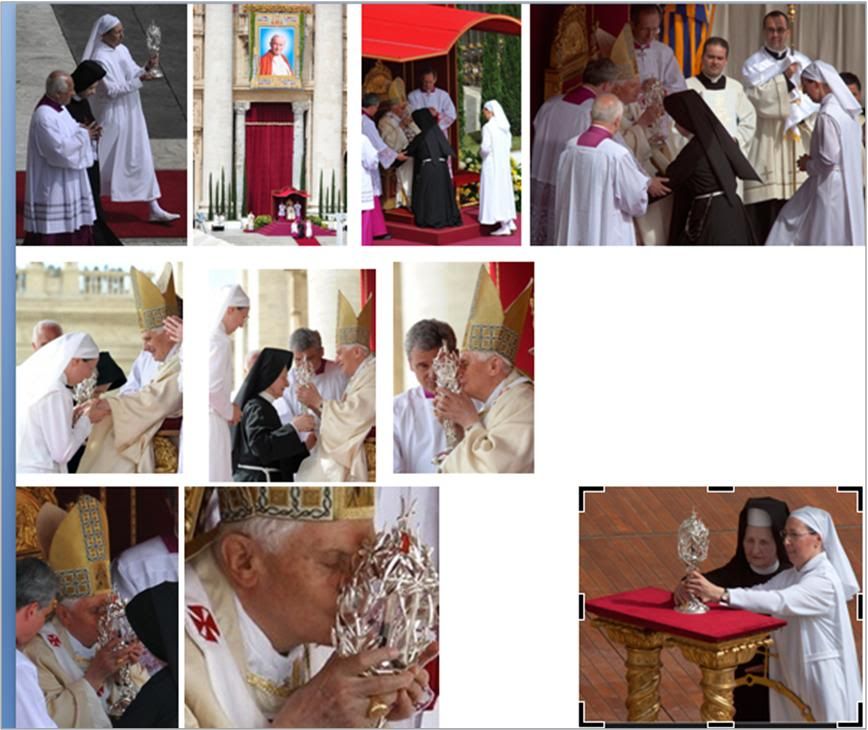
As usual, too few photos of the Mass. The bottom panel shows the presentation of the Blessed's relic to Benedict XVI
by Suor Tobiana, John Paul II's chief housekeeper at the Vatican, and Sr. Marie Simon Pierre, the late Pope's 'miracle nun'.
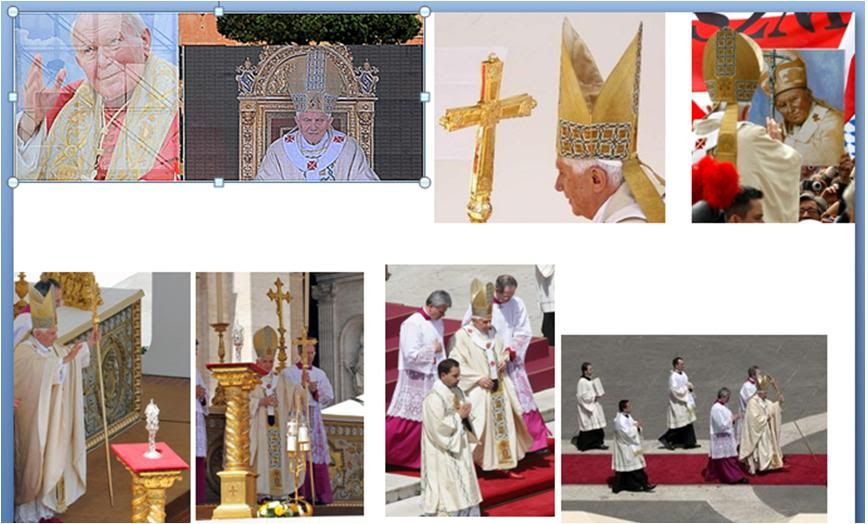
Panel shows a videocap showing the Pope giving his homily, on a split screen with a JP2 poster, and photos from the End of the Mass,
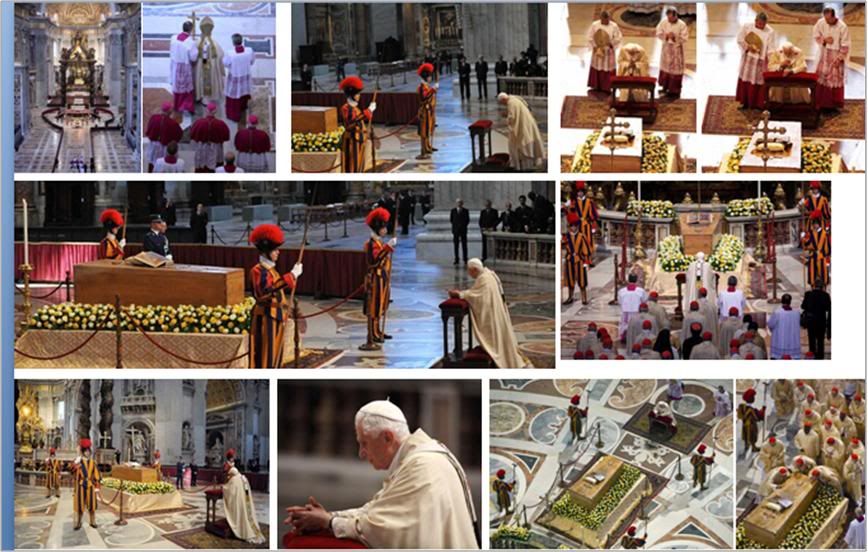

Pope Benedict in prayer before the casket of John Paul II in St. Peter's Basilica; the other prelates at the Mass followed.

The Pope met the President of Poland and his wife, and President Napolitano of Italy, as well as other visiting heads of state,
before the Basilica was opened to the public to pray at the casket.